Day 1 – Ruins in Panama Viejo
We flew into Panama City about 11am and were able to check into our hotel by 12pm. We had lunch nearby and then took an Uber to Ruins in Panama Viejo which is open from 8:30am-5:30pm (ticket counter closes 4:30 and $10/foreigner).
Panama Viejo (Old Panama) was the original site where the city was founded in 1519. The 14 remaining ruins are spread out over an area about 1.5 kilometers long. UNESCO added Panamá Viejo to the World Heritage list in 1997. The Museo de Sitio Panama Viejo is a perfect place to start your visit, where you can view a scale model of the ruins to gain perspective on what was once on the site.

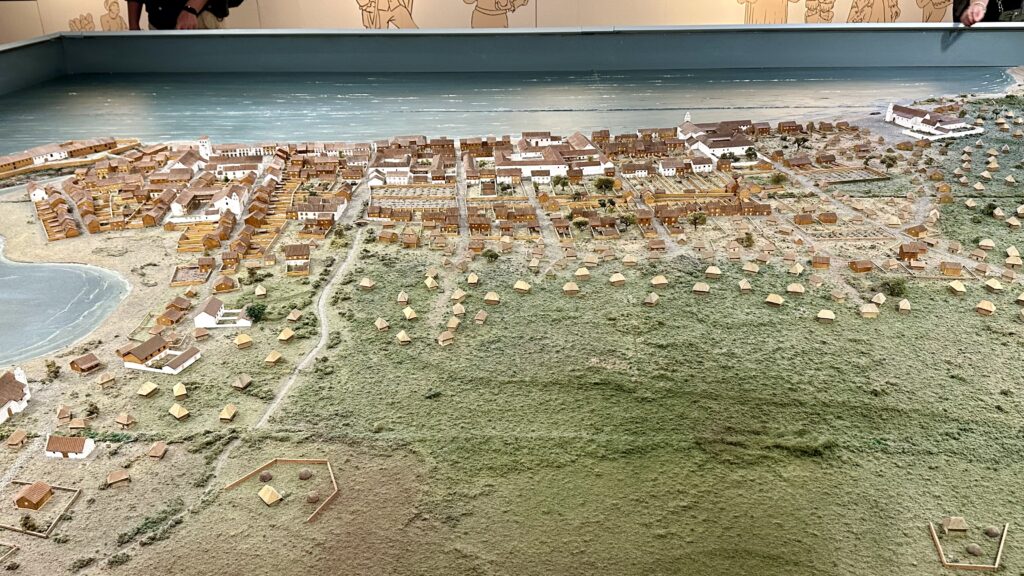
We then walked through the ruins of Panama Viejo starting at Cathedral de Nuestra Senora de la Asuncion – One of the cathedral’s most distinctive features is its inverted orientation, with the apse facing the sea rather than the east, as required by canons. Its sturdy bell tower doubled as an observation post and was eventually leased to the Town Hall to store archives.



Plan to spend approximately 2 hours to visit the museum and walk through the entire stretch (1.5 km) of the remains.
Day 2 – Casco Viejo (Panama Old city)
The most enchanting area of Panama City is Casco Viejo, the Old Town. It was founded in 1671 after the original city, about seven kilometers up the coast, was ransacked by the marauding Captain Morgan. Casco Viejo was designated a UNESCO World Heritage Site in 2003, and since then the area has evolved from a former urban slum to the city’s central showpiece. It is relatively compact, surrounded by water on three sides, and the main sights are easily explored on foot.
We started our self tour at Plaza de la Independencia. Also called Plaza Mayor or Plaza de la Cathedral, the park celebrates Panama declaring independence from Colombia in November, 1903. On one side of the plaza is the imposing Cathedral Metropolitana, dating from 1688, home of the Archdiocese of Panama. In the center of the plaza, you’ll find benches beneath large trees and a lovely, white octagonal shelter, where people come to sit and relax.

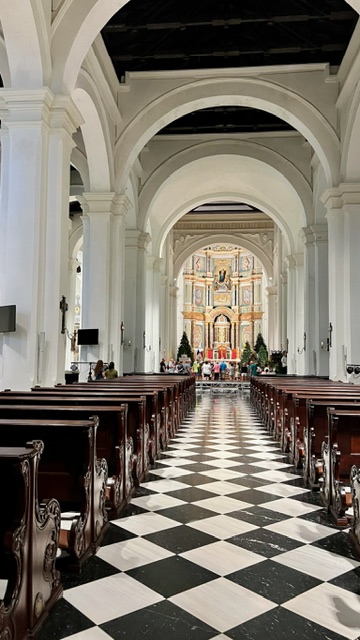

Plaza Bolivar – Within walking distance of Plaza Mayor, this is a small plaza surrounded by 19th-century architecture, and one of Casco Viejo’s most pleasant spots. Across the plaza, is the church, San Francisco De Asis.

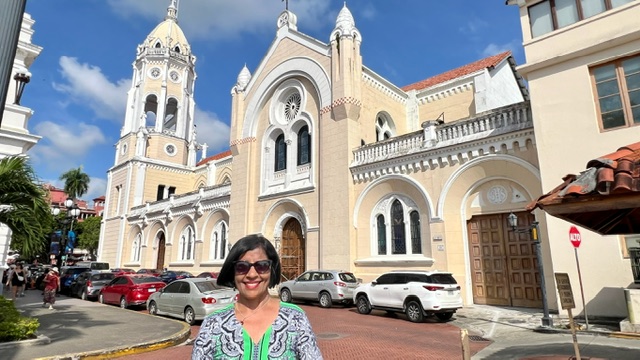
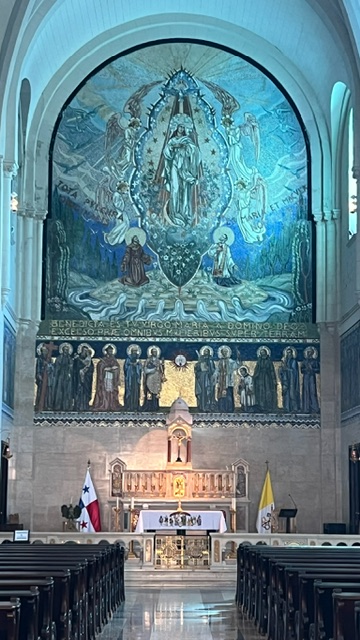
Iglesia y Convento de la Compania de Jesus – Dating from 1741, all that remains of this convent and church are towering walls and arches. Nonetheless, it is a central landmark and one of the most impressive and most photographed sites in the Old Town. At night, floodlights illuminate the structure, creating a dramatic setting. Look closely at the walls to see an assortment of sea shells found in the surrounding waters. The ruins are to the southwest of the Plaza de la Independencia.

Iglesia y Convento de Santo Domingo – Built in 1678, these gorgeous ruins of Iglesia y Convento de Santo Domingo is another of the few actual ruins in Casco Viejo, although seemingly more intact than Iglesia y Convento de la Compania de Jesus above. This well-preserved site consists of walls and arches, including one unique flat arch (arco chato), which was reportedly installed to help with acoustics.
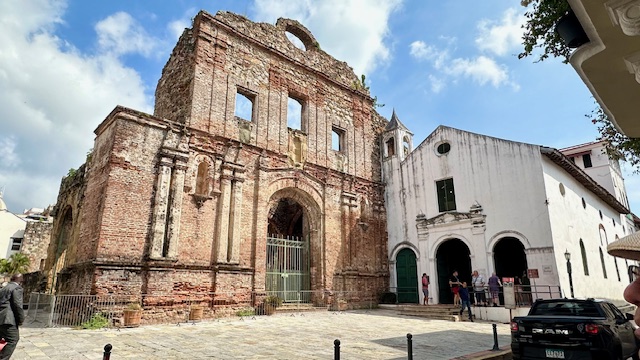



Paseo de las Bovedas – For souvenir shopping, Paseo de las Bovedas or Estaban Huertas, popularly known as Lovers Lane, is a good place to start. Located at the southern end of Casco Viejo, this walkway along the old seawall is lined with numerous tables of vendors selling interesting items, ranging from license plates right through to indigenous artwork and crafts. Covered with bougainvillea and set along the oceanfront, this area is a welcome respite from the sun and heat of the inner streets.
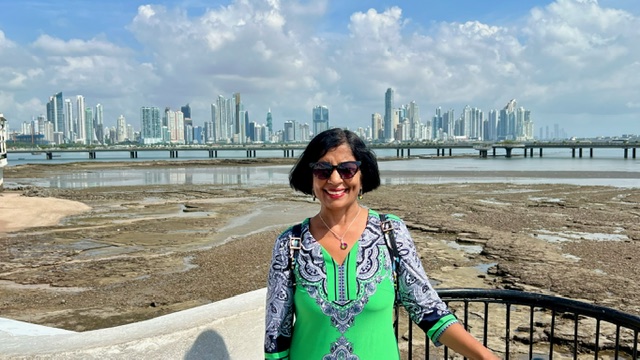
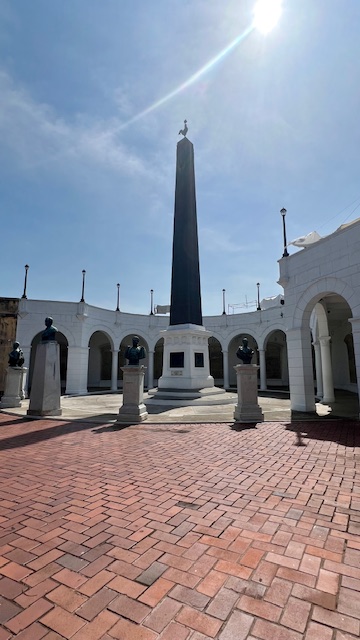
If you keep walking past the vendors, you will eventually end up at Plaza de Francia, a small park and monument celebrating the historical relationship between Panama and France. This plaza pays homage to the French role in the construction of the canal. Its large stone tablets and statues are dedicated to the memory of the 22,000 workers who died trying to create the canal. Most of the workers died from yellow fever and malaria. Among the busts is a monument to Cuban doctor Carlos J Finlay, whose discovery of how mosquitoes transmit yellow fever led to the eradication of the disease.

Day 3 – Panama Canal, Locks, and San Lorenzo Fort
Today we went on a guided tour. We drove all the way from Panama City on the Pacific Ocean to Colon on the Atlantic Ocean stopping at the following sites.
- Miraflores Visitors Center
- Pedro Miguel Locks
- Boat ride on Gatun lake and monkey island
- Agua Clara locks
- San Lorenzo fort in colon.
Panama Canal is 50 miles long and it takes a ship 8-10 hours to travel Ocean to Ocean. Our first stop was at the Miraflores visitors center where we watched a ship travel from Pacific Ocean through the Miraflores locks onto Gatun lake.


We then drove for about 10 minutes and made a brief stop at another lock Pedro Miguel Locks. There are no tourist facilities here, but you can get a free glimpse of the canal from a parking lot on the highway.

Boat ride on Gatun Lake and Monkey Island – Created in 1913 by damming the Chagres River, Gatun Lake is a key part of the Panama Canal, providing the millions of liters of water necessary to operate its locks each time a ship passes through. The impassable rainforest around the lake has been the best defense of the Panama Canal.

We stopped at Gamboa dock, from where we took a boat ride on Gatun Lake to monkey island. We were actually in the Panama Canal with ships passing by on their way to Atlantic Ocean.


As we approached the monkey island, we saw some monkeys swinging from tree to tree. We were not allowed to step foot on Monkey island but you can interact with them and even feed them as they swing from the tree onto the boat. This whole activity lasted one and half hour.
We were then only our way to Agua Clara visitor center, which was an hour away. Here we watched a ship go from Gatun lake through the Agua Clara locks onto Atlantic Ocean.


Our last stop for the day was San Lorenzo fort which was a 20 min drive from Agua Clara visitor center. Located near the mouth of the Chagres River, the remains of the mighty Spanish Fort San Lorenzo stand surrounded by the sparkling Caribbean Sea and over 30,000 acres of protected rainforest.

The Fort was originally built in 1595 but was attacked almost continually after its completion. It was rebuilt in 1768 and had fortifications added to it in 1779. The Fort was declared a UNESCO World Heritage Site in 1980. The site features a series of underground tunnels and rooms used to hold prisoners and several cannons which have been left in place.


Some useful information about travelling around Panama City :
- Many restaurants in Panama City did not have a menu in English which was a surprise to us. It will certainly help to know a little bit of Spanish in Panama.
- Miraflores Visitors Center is about 20 minutes from Panama City downtown. It is $17/person admission to watch ships pass through the locks which also includes a ticket to watch an IMAX movie about the building of the canal. Ships transit the locks between 8-11am or 3-5pm. Although Miraflores Visitor Center, has multiple viewing platforms over the Locks, all of them get crowded pretty quickly, try to get there as early as possible to get a good viewing location.
- All the site seeing we did on day 3 with a tour guide can be done on your own by renting a car and driving from Panama City to Colon. It takes about an hour and a half to travel the 55 Miles (88.5 Km) from Panama City on the Pacific side, on the Trans-Isthmian Highway, to Colon, on the Atlantic side. Just make sure to follow traffic rules and avoid driving in the night.